Proper name Bhagyalakshmi Temple State/province Telangana Primary deity Lakshmi | Country India District Hyderabad district, India | |
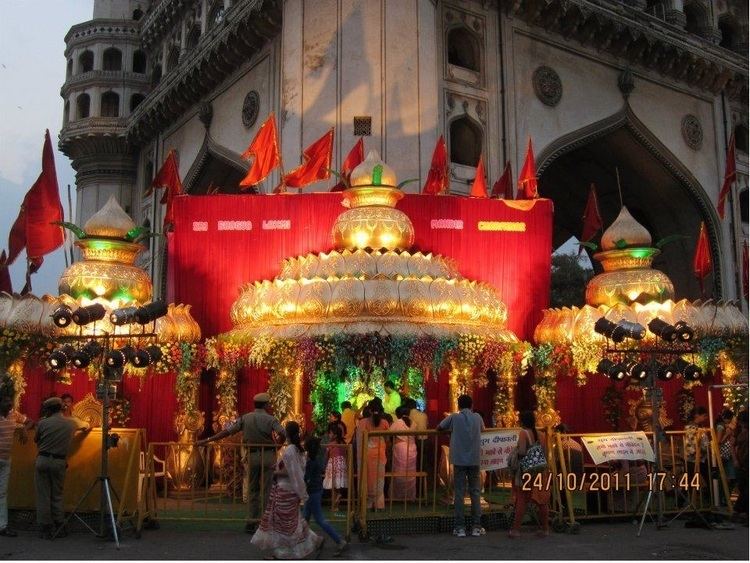 | ||
Similar Charminar, Nehru Zoological Park, Makkah Masjid - Hyderabad, Snow World, Jalavihar | ||
Bhagyalakshmi temple is a Hindu temple located in Hyderabad, India. This temple is located at the base of the city's historic Charminar declared as monument under care of Archaeological Survey of India (ASI). The temple is dedicated to the Goddess Lakshmi.
Contents
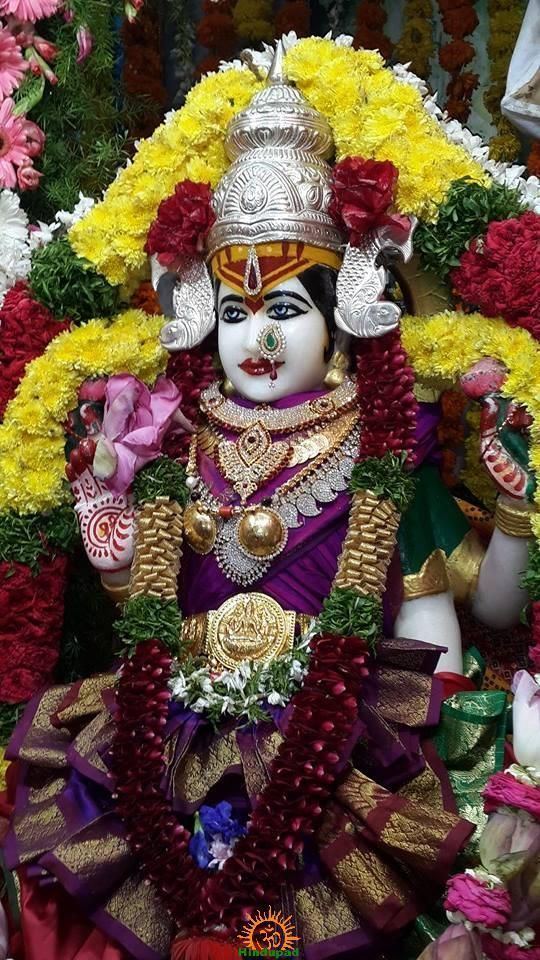
History
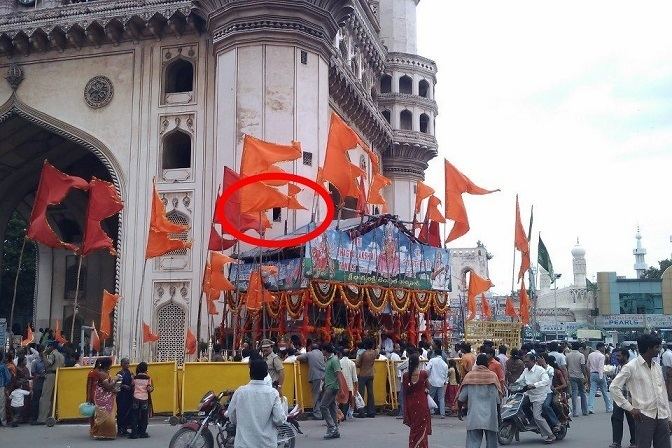
There are different views on the age of temple. Claims exist that the temple's roots are as old as the Charminar itself, while others state that it was created as recently as the late 1960s. According to the older claims, during the reign of Muhammad Quli Qutb Shah, who constructed the Charminar, the temple site consisted of a holy stone. Later, the devotees started lacing the stone with haldi and kumkum, and in the 1960s, an idol was installed and a shed was added. Proponents of this view cite examples of religious tolerance during the period of Muslim rulers such as the Nizam disagreeing with the proposed shifting of a temple at the time of the construction of the High Court building and letting it stay inside the court complex which exists even today.
According to one local tradition, the shrine was established in the memory of the Queen Bhagmati (or Bhagyavati).
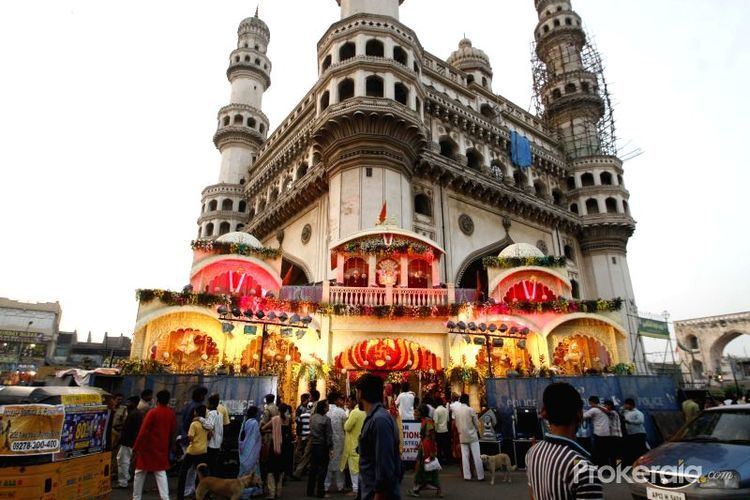
Claims of newer origin are proposed by historians such as Narendra Luther, that maintain that the temple had no existence of any sorts until the 1960s. According to these historians, one of the stones near Charminar was painted with the saffron color in 1965, and an old woman became the person in-charge of this shrine. After an APSRTC bus collided with the stone and damaged it, a pucca structure was created at the site. The stone was replaced with an idol of the goddess Lakshmi.
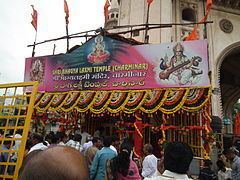
The co-existence of the structures is seen as a reflection of the "composite culture" of Hyderabad. People believe that Charminar had places of worship for both communities for several centuries and it was sending a message to the entire world about rich secular traditions and the Gangajamni tehzeeb ("composite culture") of Hyderabad.
Diwali Decorations
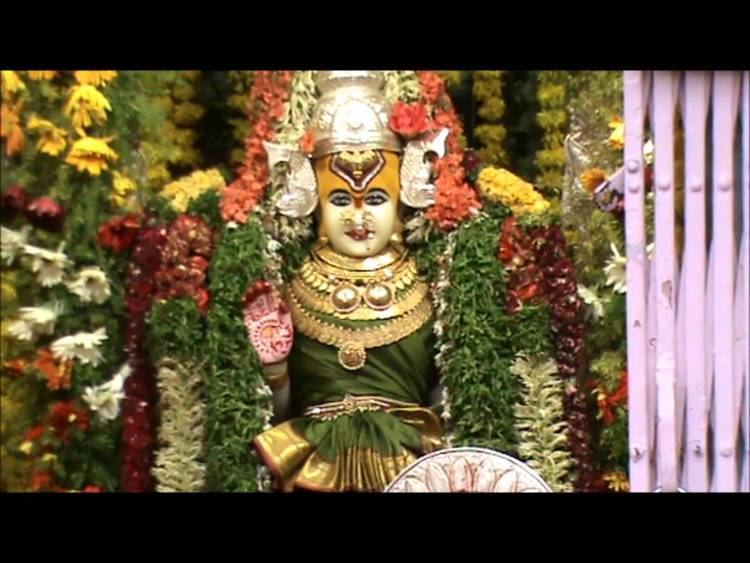
Every year, Bhagyalakshmi temple is decorated for Dasara and Deepawali for a few days. The entire decoration is 30–50 feet. Diwali is celebrated worldwide by Hindus to convey the message of enlightenment and destruction of evil. Goddess Lakshmi birthday falls on the day of Diwali. During the 5th incarnation of Lord Vishnu, he rescues Goddess Lakshmi from the prison of King Bali.
Controversies
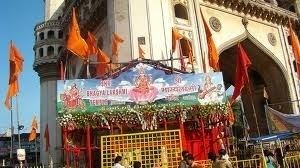
The temple has been a subject of controversy due to its location in a Muslim-majority area, and the alleged "threat" it poses to the historic Charminar structure. In the 1960s, the replacement of the holy stone with an idol and the addition of a temporary shed evoked communal tensions.
In 1979, the Majlis-e-Ittehadul Muslimeen (MIM), a political party in India, called a bandh to protest against the encroachment on the mosque. When some local Hindu traders requested to keep open their shops due to ongoing Hindu festivities, communal forces desecrated the temple on 23 November 1979, looted the shops and set fire to them.
During the Ganeshotsava celebrations in September 1983, certain Hindu organizations put up big cloth banners at a number of places in the area asking for the declaration of India as a Hindu republic. In this charged atmosphere, a Muslim threw a stone at the temple. Some Hindus desecrated a mosque in retaliation and placed idols and pictures of Hindu Gods which resulted in MIM calling for a bandh. The situation soon developed into riots, in which 45 people were killed.
During the night of 1 November 2012, the temple administration started to carry out some construction work without the permission of Archaeological Survey of India (ASI), stating that they were decorating the temple ahead of the Diwali festival. The construction activity, which was illegal according to the ASI, was stopped by the police. This construction work at the temple premises triggered Hindu-Muslim tension in the city. Some local Muslim politicians feared that the expansion might damage the historic Charminar, which they identify with Islamic heritage.
The temple authorities maintain that they were not planning an expansion and had only replaced the worn-out bamboo structures with new ones. A contingent of MIM party workers and five MLAs led by Akbaruddin Owaisi organized a rally, alleging that the police were facilitating the illegal expansion work. The police stopped the rally and took the MIM leaders into custody. Following this, a few violent incidents were reported in the city, including stone pelting and damage to four APSRTC buses, two cars, an ATM and a garments showroom. The city administration temporarily put a ban on the public visits to Charminar, shut down the nearby market and barricaded some of the streets. The police also prevented the Hindu leaders from organizing a march to the temple by taking the organizers into custody.
On 16 November 2012, more violence broke out after the Friday prayers at the Mecca Masjid. A large number of people proceeded towards Charminar after the prayers to offer 'salam'(salutation) at a religious symbol abutting the monument, but they were stopped by the police. The protesters started raising slogans against the police and demanded that restrictions be lifted. The protesters later pelted stones and attacked vehicles and shops. The police used teargas shells and baton charge to disperse the mobs. Seven people were injured during the violence.
